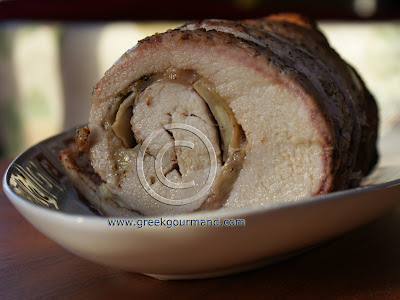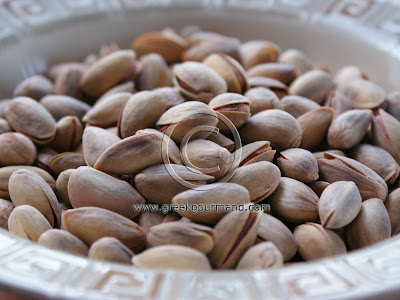Stuffed Pork Loin - Hirino Gemisto (Χοιρινό γεμιστό)

Traditionally, pork or rooster (and sometimes both) are served as part of Greek family meals on New Year's Eve or Day. Pork Loin stuffed with Kefalograviera cheese and mushrooms. Click to enlarge image. Yesterday marked our second wedding anniversary and Sophie and I spent a quiet evening entertaining at our home. The table was set for six; the guests included our Best Man and Lady, along with another couple who are also very dear friends. According to my version of an ancient custom, I rarely invite more than nine guests to an indoor dinner symposium. I call it the “933 Rule” and it really is quite a successful play when entertaining guests over the Holidays. The company, in order to be close yet not unmanageable, must never exceed the number of the Muses (nine), nor ever be fewer than the number of the Fates (three). Nor should anyone present consume more cups of wine than there are Graces (also three). Now, three glasses of wine may not sound like a lot, but it is the

